Moderately strong M7.2 solar flare erupts from Region 3293
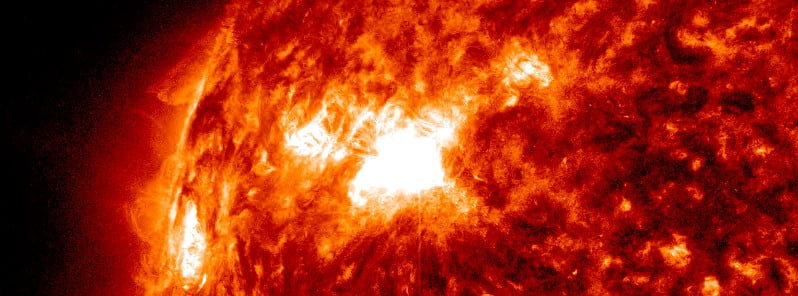
A moderately strong M7.2 solar flare erupted from Active Region 3293 at 10:45 UTC on May 3, 2023. The event started at 10:36 and ended at 10:49 UTC.
There were no radio signatures that would suggest a coronal mass ejection (CME) was produced.
The region has a ‘beta-delta’ magnetic configuration and is rotating toward the center of the disk. Earth-directed coronal mass ejections (CME) will be possible from this region in the days ahead.
This is the 4th M-class solar flare since M7.1 at 13:09 UTC on May 1. It follows M4.2 at 09:27 UTC and M3.1 at 10:14 UTC today, both from region 3293.
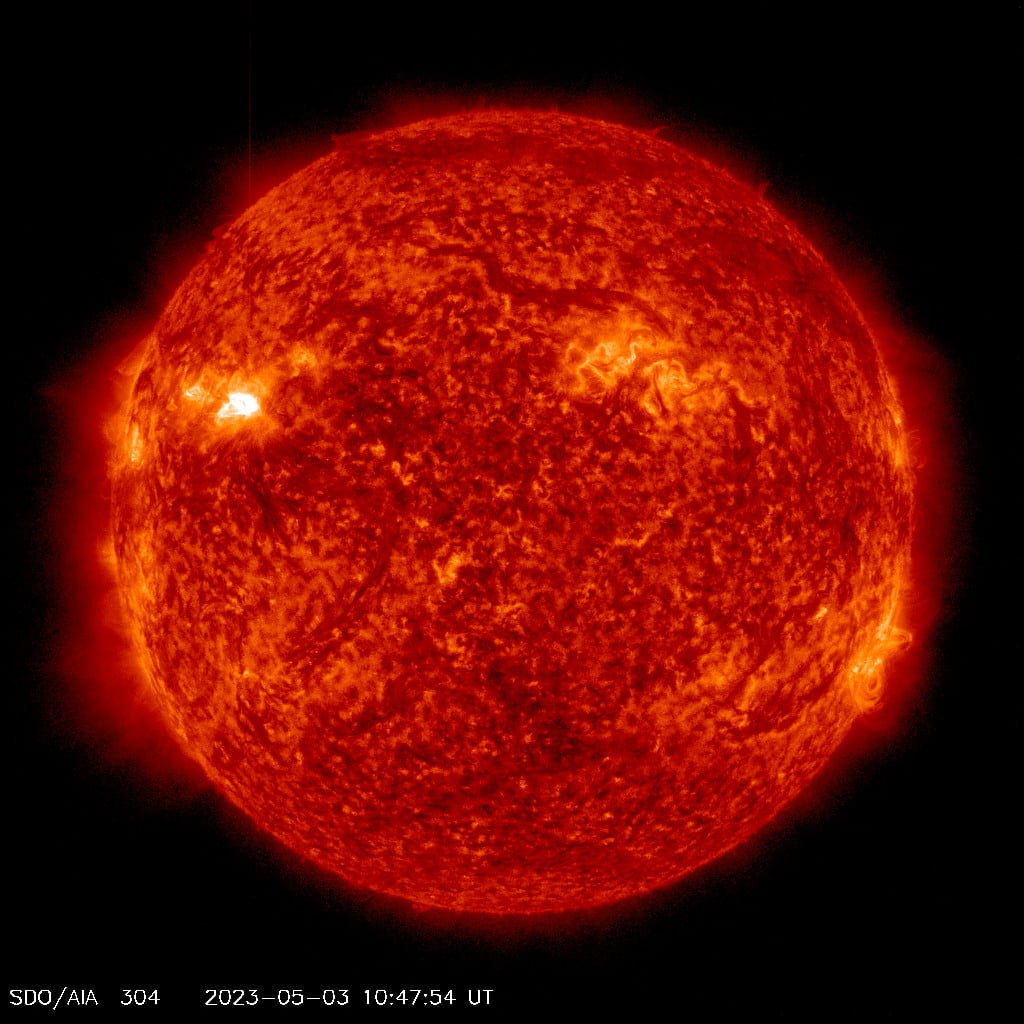
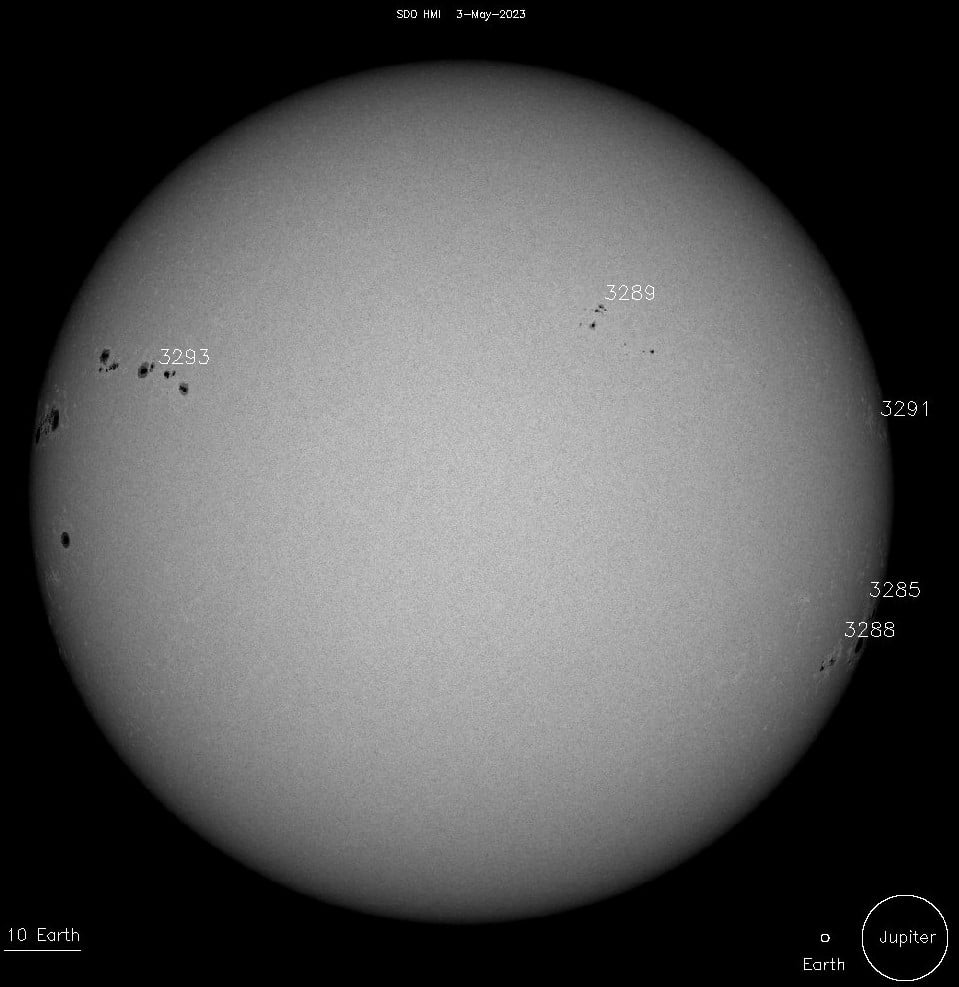
3288 – Beta-Delta
3289 – Beta
3291 – Alpha
3293 – Beta-Delta
3294 – Alpha
3295 – Alpha
3296 – Beta
3297 – Alpha
Sunspots on May 3, 2023. Credit: NASA SDO/HMI
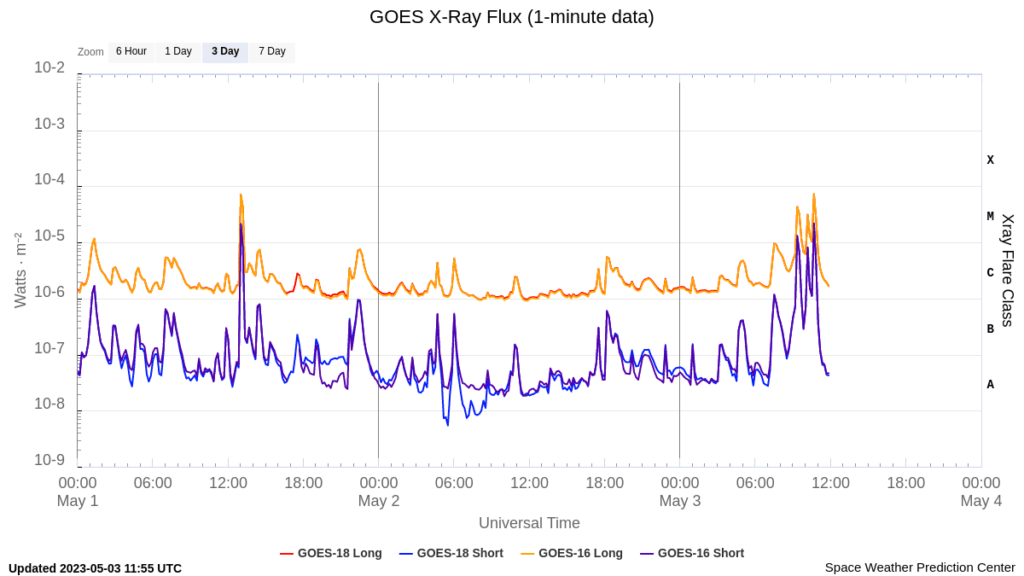
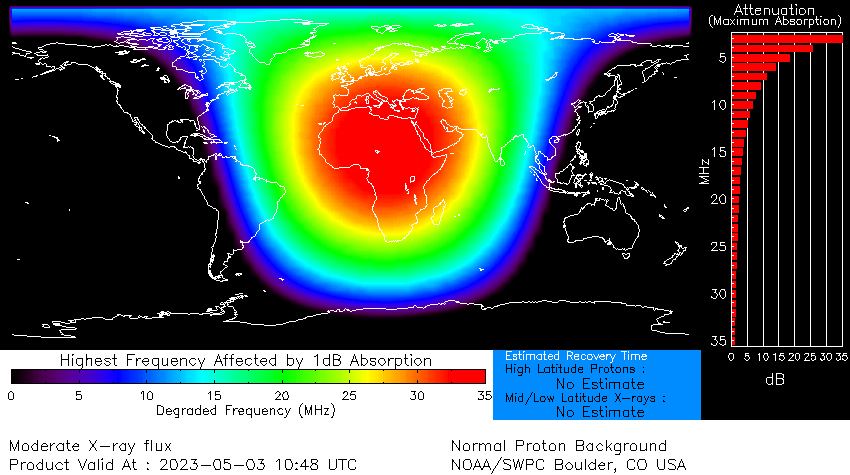
Solar activity is forecasted to remain at low levels between May 3 and 5, with the possibility of isolated M-class flares (R1-R2; Minor-Moderate) occurring. There is also a slight chance of an X-class flare (R3; Strong) during this period. These predictions take into account the combined flare probabilities from all visible active regions, with a particular focus on the more complex Regions 3288 and 3293, which contribute to the overall flare potential.1
Solar wind parameters in 24 hours to 12:30 UTC on May 3 were indicative of continued, elevated solar wind speeds, with likely contribution from an isolated negative polarity coronal hole high speed stream (CH HSS). Total IMF strength averaged 5 nT and the Bz component was variable but with more prolonged periods of southward direction in the first half of the reporting period. Solar wind speed averaged about 475 km/s and the phi angle was predominantly negative, with oscillations between sectors later in the period.
Influences of a negative polarity CH HSS are still likely through May 3, however, additional enhancements and disturbances in the IMF are possible due to the nearby passage or weak flanking influences of an anticipated CME (from the April 29 event). A gradual return towards more ambient, background-like conditions is anticipated on May 4 and 5.
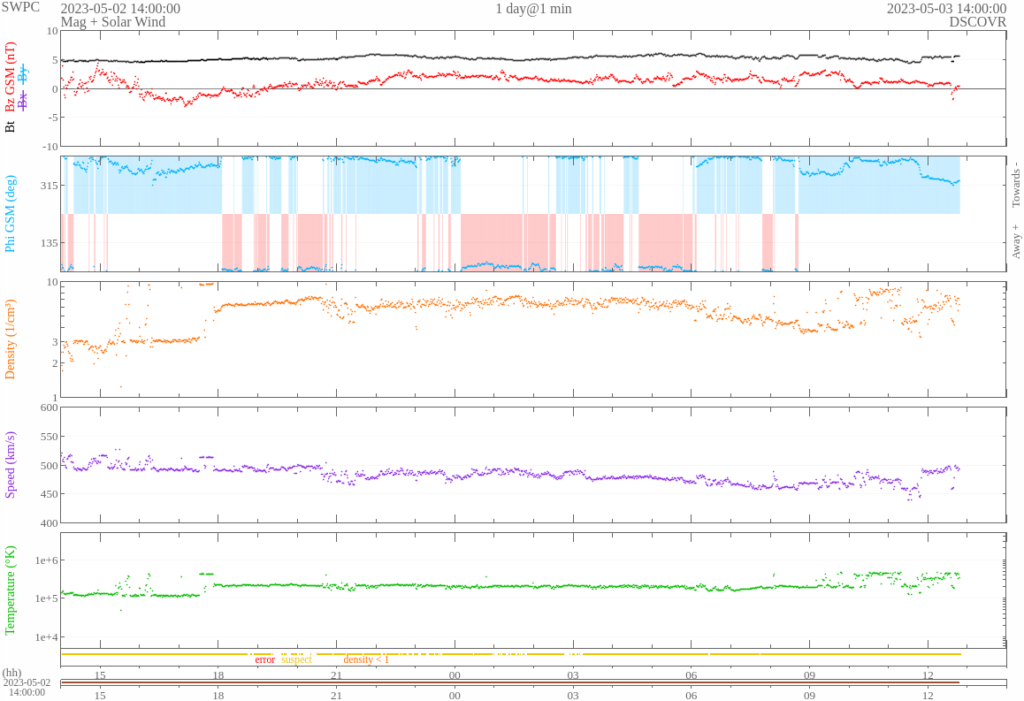
The geomagnetic field was quiet over the period. Primarily quiet to unsettled conditions are expected, with an isolated active period possible on May 3 due to the mildly enhanced solar wind environment and possible transient influences. Quiet to unsettled conditions are expected on May 4 as solar wind field enhancements decrease. Primarily quiet conditions are forecast for May 5.
References:
1 Forecast Discussion – Issued: 2023 May 03 1230 UTC – Prepared by the U.S. Dept. of Commerce, NOAA, Space Weather Prediction Center
Featured image credit: NASA/SDO AIA 304

Commenting rules and guidelines
We value the thoughts and opinions of our readers and welcome healthy discussions on our website. In order to maintain a respectful and positive community, we ask that all commenters follow these rules.